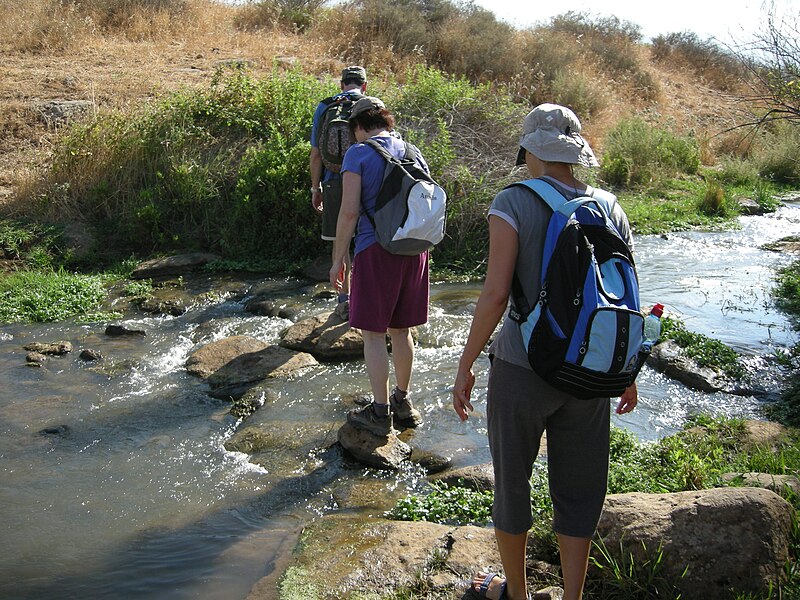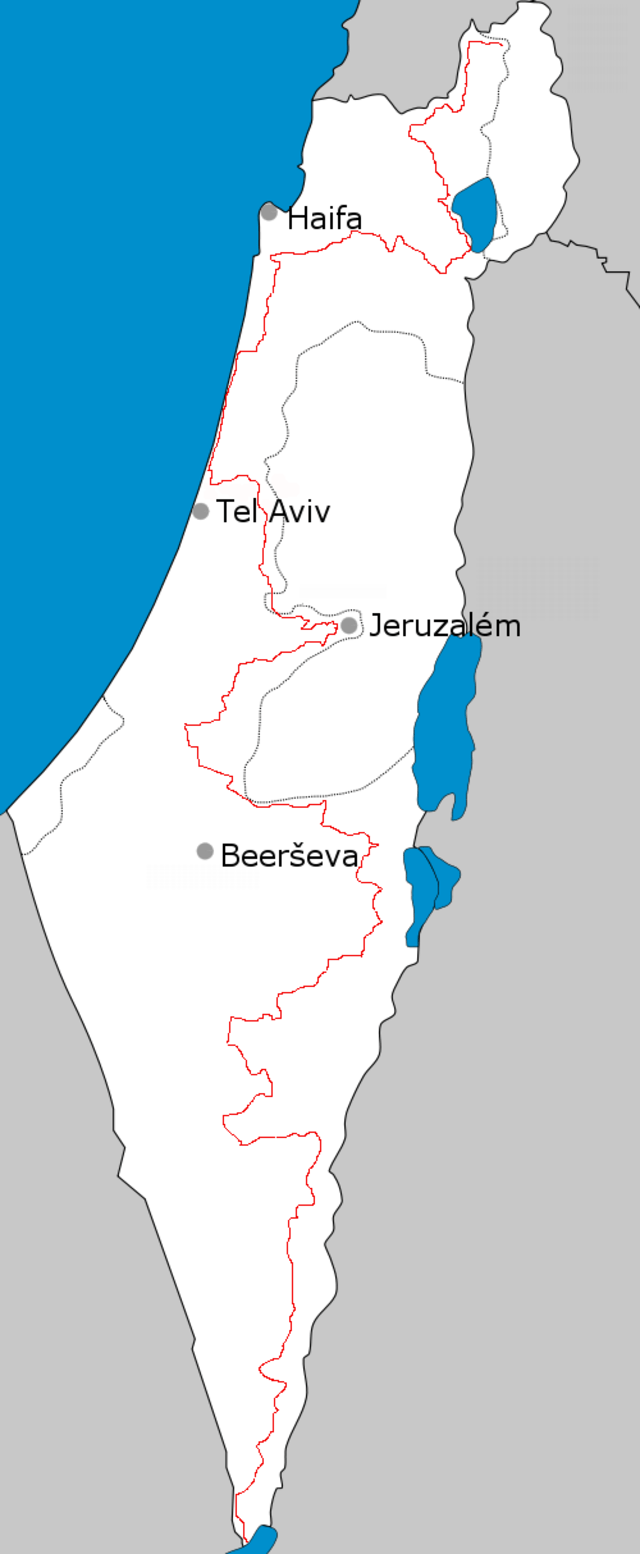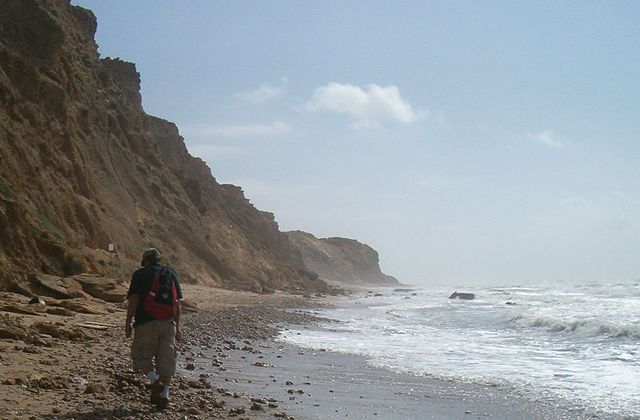For weather-beaten but indefatigable trekkers, they should put the Israel National Trail on their bucket list.
While the Israel National Trail may not obviously be the world’s longest hiking trail, it is guaranteed to be an epic one, for sure! Hiking in the Holy Land is the dream of every trekker. The Israel National Trail will leave you in awe as you will cross through the biblical landscapes.
The Israel Hiking Trail (Shvil Yisra’el) is the longest designated hiking trail in Israel as it crosses the entire country. Measuring 1,025 kilometers (636.9 miles), the trail extends from Kibbutz Dan (just near Lebanon’s border) in the north to Eilat in the south.
The trail is broken down into 44 segments:
- First 19 segments – northern Tel Aviv. Water is the most abundant there.
- Last 25 segments – from Tel Aviv to Eilat. From Segment 32 on, water becomes scarce.
For a small country, Israel will surprise you with several walking trails and a diverse landscape. If you have trekked the other trails in Israel before, then that may prepare you for the country’s ultimate hiking trail. The Israel National Trail will reward you with diverse and breathtaking natural wonders, the ruins of the ancient cities, and slices of modern-day Israeli life. Not to mention that you will meet fabulous people along the way.
History
It was journalist Avraham Tamir who hatched the idea of a great hiking trail for Israel. A passionate trekker himself, Tamir had been to several hiking trails, including the Appalachian Trail in the United States during the 1980s. It was from this particular hike that Tamir dreamed of an “epic” trail in Israel.
Upon returning to Israel, Tamir went to the Israel Trails Committee (which is housed by the SPNI – Society for the Protection of Nature in Israel) and approached its director, Ori Devir, with the idea. A hiker himself and one of the founders of the SPNI, Devir fell in love with the idea. He began the long process of establishing the trail. Devir and his team gathered several ideas and feedback from hikers, tour guides, park rangers, and nature lovers. After 15 long years of research, investigation, bureaucracy, and hard work, the Israel Trails Committee formally inaugurated the Israel National Trail in 1995.
Most of the Israel National Trail was patched together from a network of pre-existing trails (which were thousands of kilometers long) across the country. Today, the trail’s system strictly and rigorously protects environmental concerns and each region’s character.
Crossing the trail
Initially, the Israel National Trail was intended for hiking by foot only. But as jeeps were becoming increasingly common in passing the trail, some sections of the course are now accessible to any vehicle type, including private cars.
There are many ways to hike the trail: by foot, car, and even public transit.
The Israel National Trail is marked with three stripes – white, blue, and orange – that are usually painted on the rocks, tree barks, and posts. There are also other signs and directions along the way. You should see these markers frequently as you hike along. In case you haven’t seen one for more than a hundred meters, stop and find out if you’re still on the right track. But some sections of the trail that are not marked quite well, so make sure that you keep a trail map, a compass, or an online map handy.
It takes 45 to 60 days to complete the trail, depending on how you would like to take it. Whether you want to take it slow or love to challenge your limits, it is up to you. Here is a couple of suggestions:
- You may want to take it easy – do a half-day trek, stop at the camping grounds along the trail (there are many of them), or stop to volunteer in certain areas along the way.
- You can challenge yourself by hiking 25 to 30 kilometers (and above) a day and race through the jaw-dropping landscapes. You will feel exhausted, your legs and knees will become weakened, but you enormously feel satisfied at the end of the day.
When is the best time to hike?
The best time to hike the Israel National Trail is between February and May, although many hikers found the fall season just as perfect.
If you choose to hike in the springtime, it is best to start at the southern tip of the trail. Start from Eilat and then hike northward. As you reach the northern part of Israel, you will arrive just in time for the blossoming of the seasonal flowering plants and trees. Temperatures should remain pleasant, even a little warm in the afternoon. Springs and seasonal rivers will still be probably full, which means you can refresh yourself along the way. At this time of the year, the flowers will bring some color to the desert regions, and they look fantastic.
If you choose to hike in the fall, it is best to start at the northern tip of the trail. Start from Kibbutz Dan and then hike southward. The temperatures may be hot at the beginning, which means you may want to start your hikes very early in the morning. But once you reach the desert regions, temperatures should drop. It would be even cold, so make sure to pack some warm clothing. In hiking, it’s always better to be ready for some unexpected circumstances.
Where is the best place to start the hike?
You can choose any of the two routes that you like. However, it might be better to choose the route from north to south. It is relatively easier because it doesn’t include as many ascends as the south-to-north route does.
You have to build up your stamina and get used to all that walking, and so the northern sections of the trail are easier to manage than the desert regions in the south. By the time you reach the more challenging segments as you go southward, it will become more manageable. Besides, water is more plentiful in the north; from Segment 32 on, fresh water becomes scarcer along the trail.
Most people hike the trail in segments in one to three-day increments. More intrepid hikers would like to go on continuously long hikes that can take up to three months, but it depends on the place, their strength, and stamina.
Either way, you should be fully prepared – plenty of food and water, proper clothing, proper hiking shoes or boots, a first-aid kit, toiletries, a knife or a multi-tool (such as the Swiss knife), chargers for mobile devices, and most importantly, a map. Choose a durable and dependable backpack that will have enough room for all of your hiking essentials.


